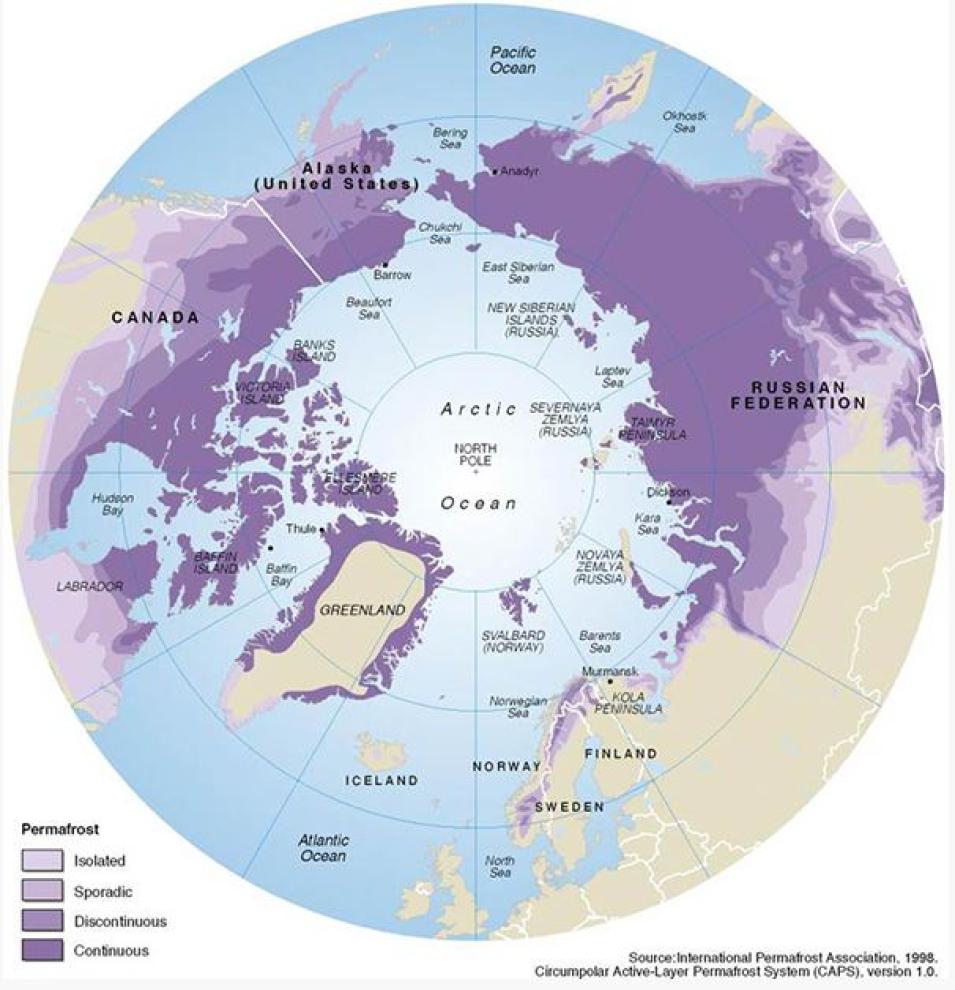Dr. Kevin Schaefer, Research Scientist, National Snow and Ice Data Center, University of Colorado.
Research Interests: Terrestrial biosphere and land surface modeling, biogeochemistry, and soil thermodynamics in the Arctic; remote sensing of active layer thickness; and modelling to predict potential permafrost thaw and estimate the magnitude and timing of the potential release of greenhouse gasses from thawing permafrost.
Research Highlights: The “sleeping giant of climate change”: that’s what some scientists who study Arctic ecosystems think permafrost—the frozen ground consisting of rock, soil, or sediment that remains at or below 0° Celsius for at least two years—could become. And they have good reason to be concerned.
In addition to that rock, soil, or sediment, permafrost also contains a lot of carbon-rich organic material, such as roots, that froze without decaying. As permafrost formed over thousands of years, it has accumulated vast amounts of this organic, carbon-rich material.
In fact, some estimates say Arctic permafrost contains 1,400 to 1,850 billion metric tons of carbon, which is about half of all the estimated organic carbon stored in Earth's soils. In comparison, about 350 billion metric tons of carbon have been emitted from all fossil-fuel combustion and human activities since 1850.
Most of the Arctic’s sequestered carbon is located within the thaw-vulnerable topsoil that resides within 3 meters of the surface, and as scientists are coming to understand, permafrost and all the carbon stored within it may not be as permanent as its name implies. According to the findings of a 2018 NASA-led study, the permafrost in the northern Arctic, once thought to be at least temporarily shielded from global warming by its extreme environment, will thaw in this century. If that happens, the organic material it contains will decompose and release carbon to the atmosphere in the form of the greenhouse gases carbon dioxide (CO2) and methane (CH4), a much more potent greenhouse gas than CO2 (although it does not remain in Earth's atmosphere as long). Further, carbon released into the atmosphere from thawed permafrost could lead to higher temperatures in the region, thereby fueling the cycle of carbon release and temperature rise.


